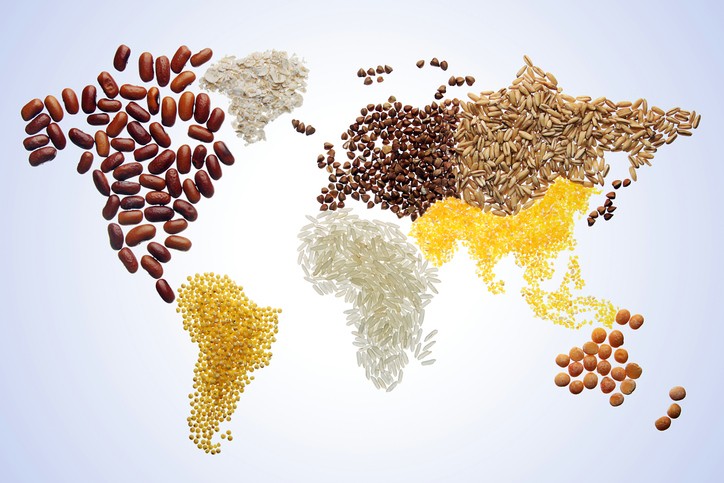
For many years, South Africa has prided itself as the most food-secure country in the African
continent and has also ranked relatively well with its peer BRICS countries. But disappointingly, the results of the 2020 Global Food Security Index recently released by The
Economist and Corteva show that South Africa has regressed. South Africa is now ranked 69th
most food-secure country out of 113 countries, from 44 (out of 113) in 2019. Technically, South Africa’s scoring dropped by just a point from last year’s position (scoring 57,8 down by 1,4 from 2019 in the Global Food Security Index). Still, other countries improved notably, resulting in the drop in South Africa’s ranking.
The Global Food Security Index is comprised of four significant sub-indices, namely; (1) food affordability, (2) food availability, (3) food quality and safety, and (4) natural resources and resilience. The affordability and availability have a higher weighting of a combined two-thirds
(each 32,4%). In 2020, South Africa experienced a sharp deterioration in the food affordability sub-index (a 5,5 drop), while all other subindices improved marginally. Notably, the major challenge was an overall increase in food prices and a deterioration in South Africa’s food
safety net programmes. These results are unsurprising. The ‘third wave’ of the National Income Dynamics Study – Coronavirus Rapid Mobile Survey (NIDS-CRAM) published on 17 February also pointed to a
rise in hunger in 2020. Moreover, South Africa’s overall food price inflation also started rising in the last quarter of 2020, averaging 5,8% y/y, from an average of 4,3% y/y in the first three quarters of the year. This challenge speaks to the rising costs of food in an environment where
more people were out of work.
The general increase in South Africa’s food prices in late 2020 was mainly underpinned by increases in staple grains prices. The deterioration in South Africa’s measured food security was not an issue of availability, as the subindices of availability showed an improvement, reflective of higher agricultural output in 2020. The driving factor behind grains price increases was, to no small degree, the strong demand for South African grains and other agricultural products in the Southern Africa market and the broader global market. This global demand phenomenon is illustrated by agricultural exports, which reached the second-highest level on record in 2020. The weaker domestic currency was amongst the factors increasing the competitiveness of South Africa’s products in the global market.
Across the rest of the continent, Morocco, Algeria, Tunisia and Egypt are now the most foodsecure countries, with South Africa trailing them. Nevertheless, within the BRICS countries, South Africa is still two positions ahead of India, 18 positions behind Brazil, 29 places behind China, and 44 behind Russia.
While South Africa’s scoring in terms of food security declined only slightly in 2020, it is worth noting that this is reflects the national picture. There are pockets of food insecurity within South Africa when one considers a household-level perspective. Over 6 million South Africans
in low-income households are not food secure, primarily due to affordability. There is also wide variation across the different provinces. Food insecurity is significantly more prevalent in Limpopo, KwaZulu-Natal and the Eastern Cape. The affordability challenge in such regions
is typical caused by higher unemployment. The rising unemployment and closure of various businesses because of the pandemic in 2020 exacerbated already challenging conditions for the provinces above. Indeed, several townships across the country experienced a similar foodinsecurity challenge, as multiple studies published in 2020 and the beginning of this year have showed.
The latest data from the Global Food Security Index are a clear indication more will need to be done to improve food security, not only at the national level but also through household targeted interventions. These could include agricultural related interventions – encouraging
smallholder farming, and in areas where land availability and environmental conditions permit, commercial production and other programmes that improve employment prospects should be encouraged and supported by the government, NGOs and social partners.
In terms of agriculture, Limpopo, KwaZulu-Natal and the Eastern Cape, which are amongst the most food insecure provinces, also have vast tracts of underutilised land. These provinces should be a priority in the Agriculture and Agro-processing Master Plan. With a commercial
focus where conditions permit, agriculture improvement would help in job creation and ultimately household food security. Importantly, the Master Plans’ actions are not only the government but the private sector and all social partners



